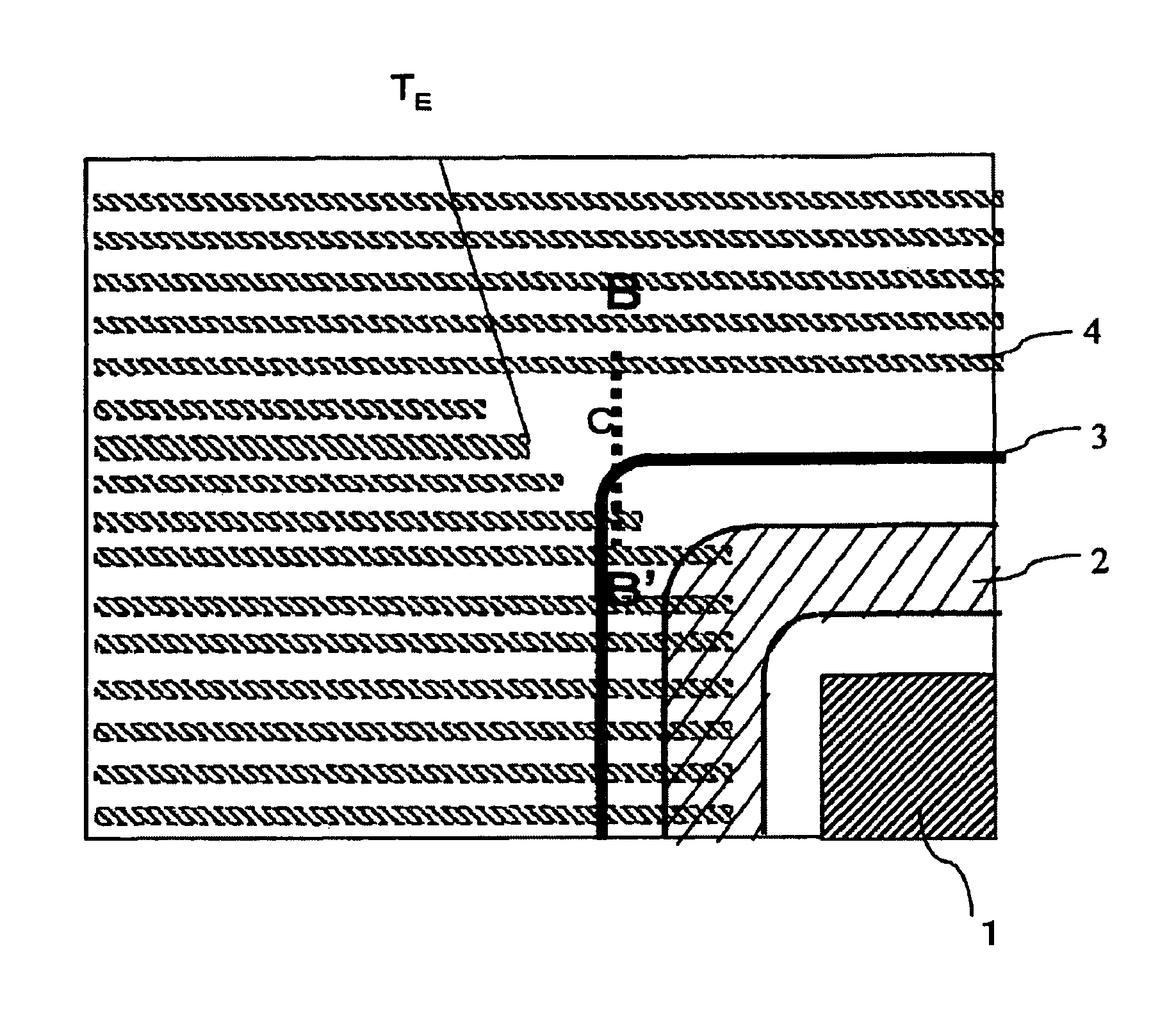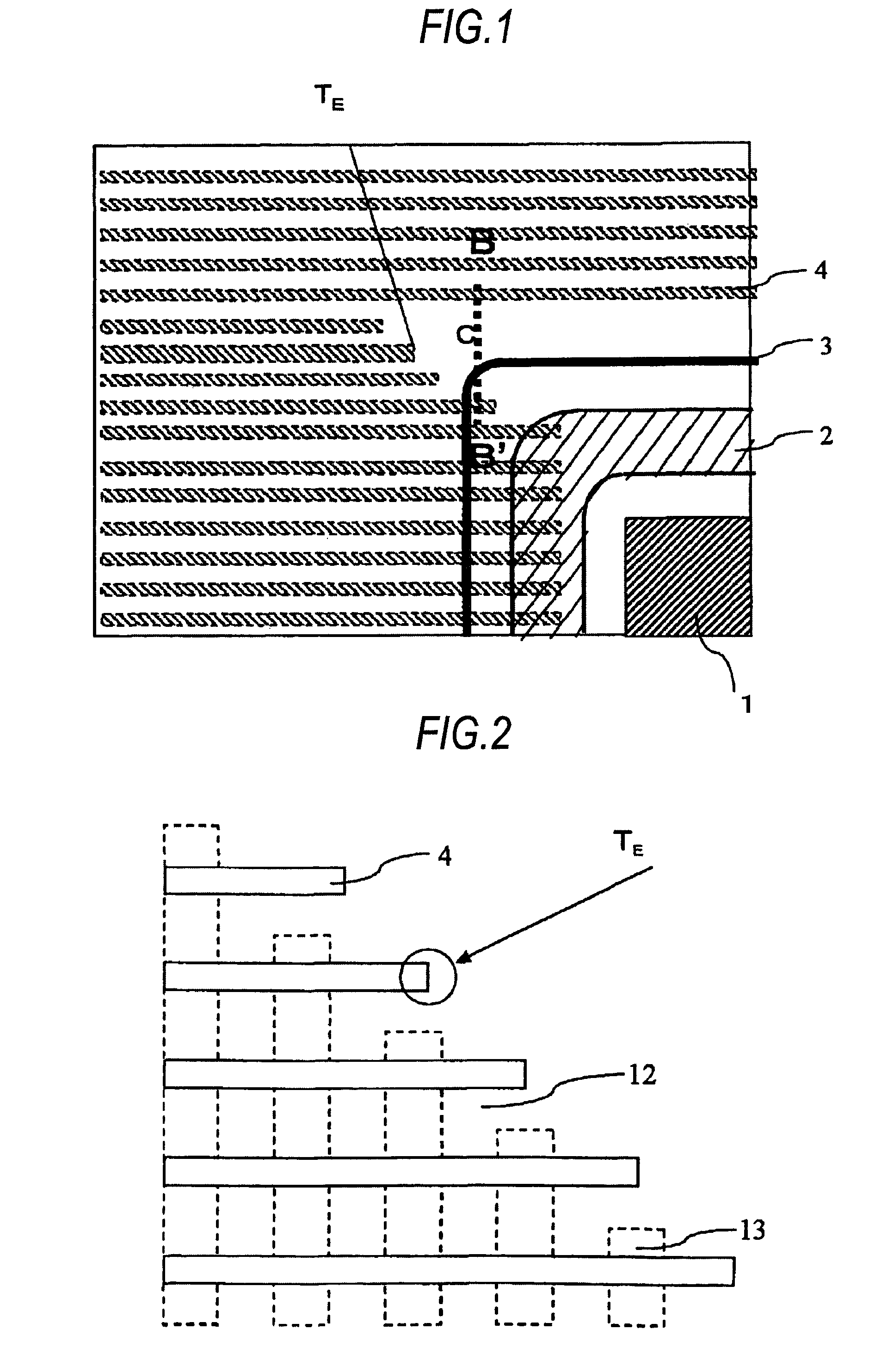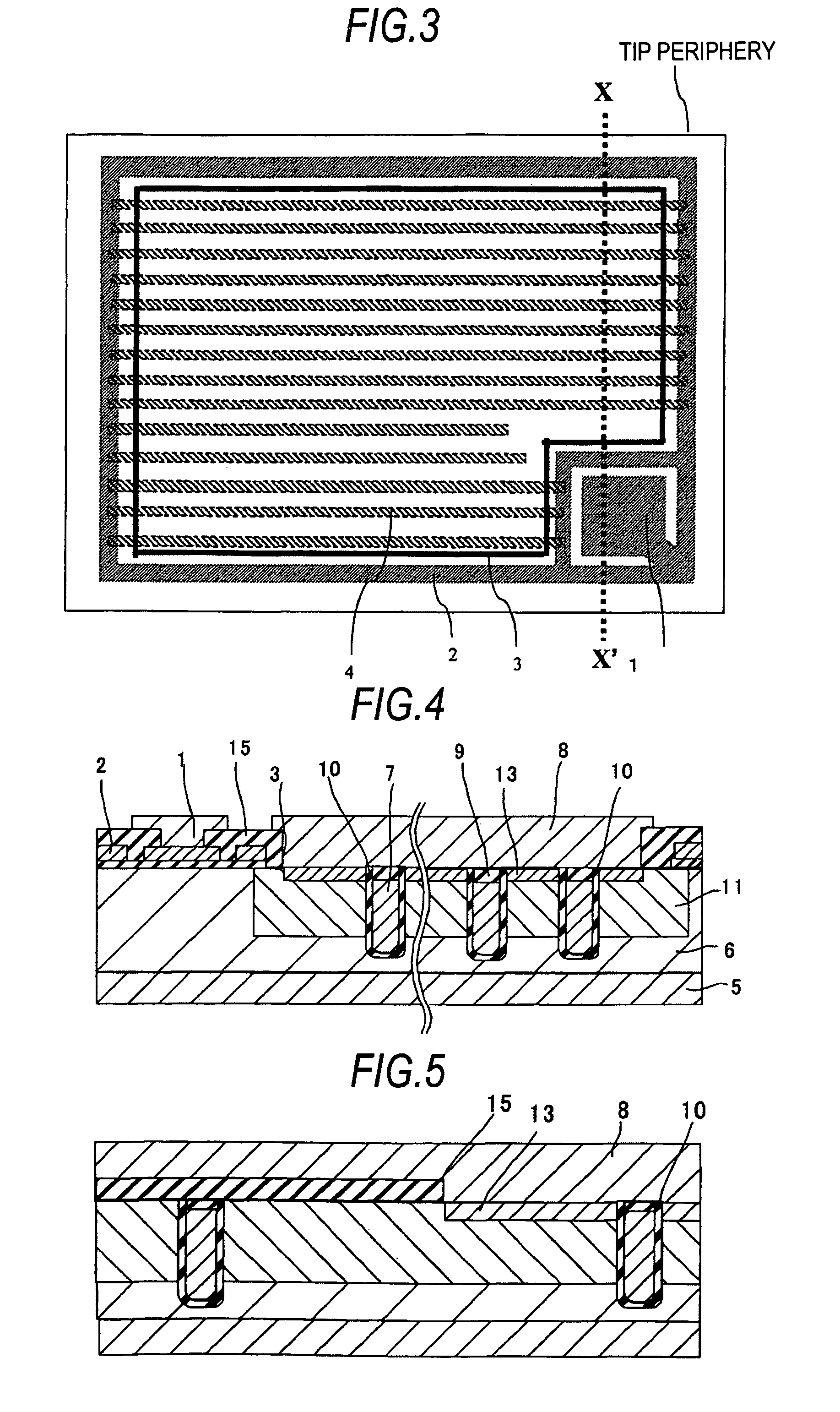Semiconductor apparatus
a technology of semiconductor and apparatus, applied in the direction of semiconductor devices, electrical equipment, basic electric elements, etc., can solve the problems of distortion, deterioration of withstand voltage, leakage current occurrence, etc., to prevent leakage current occurrence, increase the resistance and the switching speed is minimized, the effect of reducing the number of times
- Summary
- Abstract
- Description
- Claims
- Application Information
AI Technical Summary
Benefits of technology
Problems solved by technology
Method used
Image
Examples
second embodiment
[0064]Next, a second embodiment of the invention is described.
[0065]The first embodiment is constructed so that the termination parts of the trenches are distant from the corner portion of the source contact opening part 3 by the predetermined distance (1 μm) or longer as shown in FIG. 2. Instead, the present embodiment is characterized in that termination parts of trenches are distant from a corner portion C by an equal distance (1 μm) as shown in FIGS. 7A and 7B. FIG. 7B is a main enlarged diagram of FIG. 7A. Since a source region 13 made of an N-type diffusion layer is also formed in a direction orthogonal to a trench 4 herein, it is easy to form the source region 13 in a state of avoiding the end of the trench. As a result a decrease in a channel width per unit area is minimized and an excessive increase in on resistance is prevented.
[0066]In this second embodiment, with respect to a trench having a possibility of being positioned within 1 μm from the corner portion of the sourc...
third embodiment
[0069]Next, a third embodiment of the invention will be described.
[0070]In the second embodiment, termination positions of the trenches are gradually changed so that the termination parts of the trenches are distant from the corner portion of the source contact opening part 3 by the equal distance (1 μm) as shown in FIGS. 7A and 7B. In addition to this feature, in this third embodiment, a coupling trench 14 for coupling adjacent trenches in the vicinity of the trench ends are disposed as shown in FIGS. 8A and 8B. In addition, a source region 13 is not disposed in the vicinity of the coupling trench 14.
[0071]According to this configuration, by directly connecting the adjacent trenches by the coupling trench 14, an increase in gate resistance is prevented and a switching speed is reduced.
[0072]Also, as the source region is not disposed in the vicinity of the coupling trench, performance of the MOSFET is stabilized. This stabilization is a result of formation of channels so as not to b...
PUM
 Login to View More
Login to View More Abstract
Description
Claims
Application Information
 Login to View More
Login to View More - R&D
- Intellectual Property
- Life Sciences
- Materials
- Tech Scout
- Unparalleled Data Quality
- Higher Quality Content
- 60% Fewer Hallucinations
Browse by: Latest US Patents, China's latest patents, Technical Efficacy Thesaurus, Application Domain, Technology Topic, Popular Technical Reports.
© 2025 PatSnap. All rights reserved.Legal|Privacy policy|Modern Slavery Act Transparency Statement|Sitemap|About US| Contact US: help@patsnap.com



